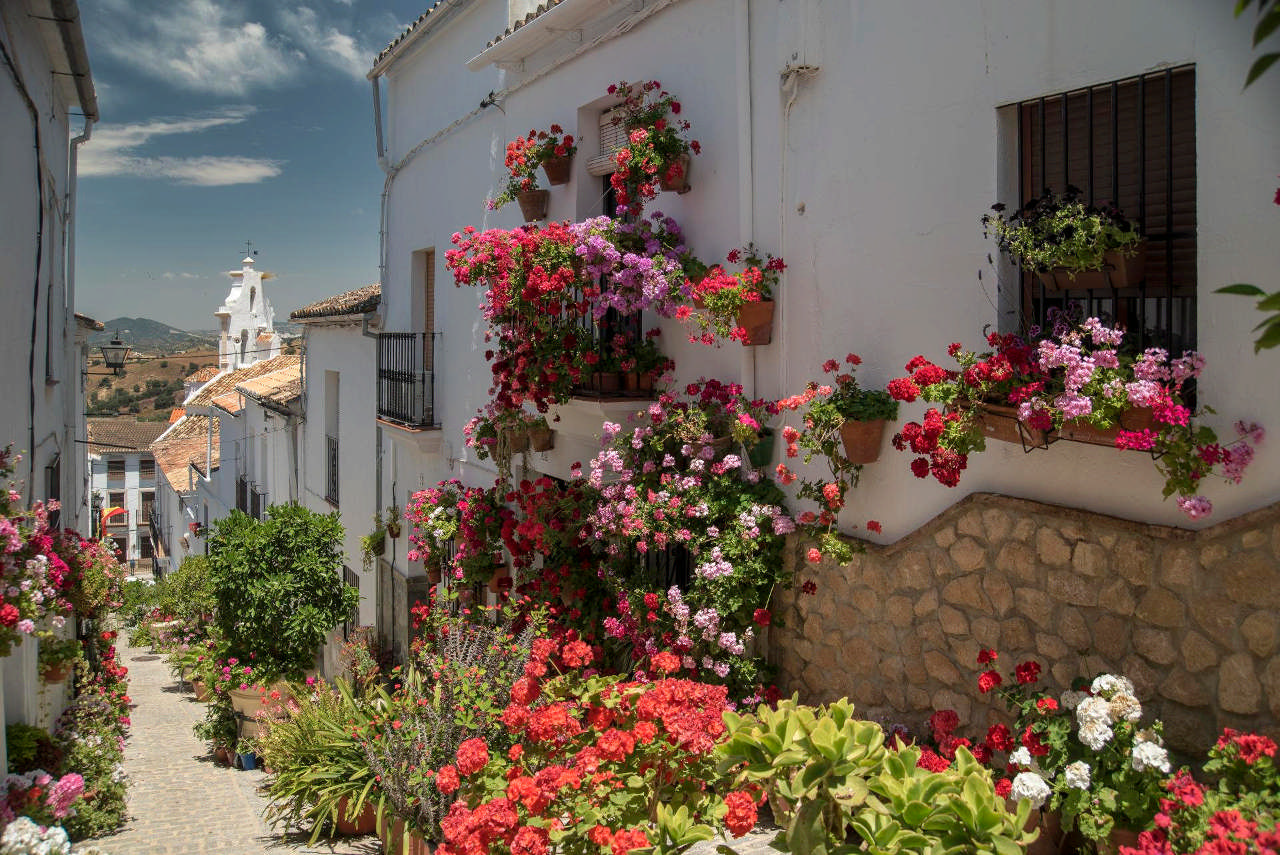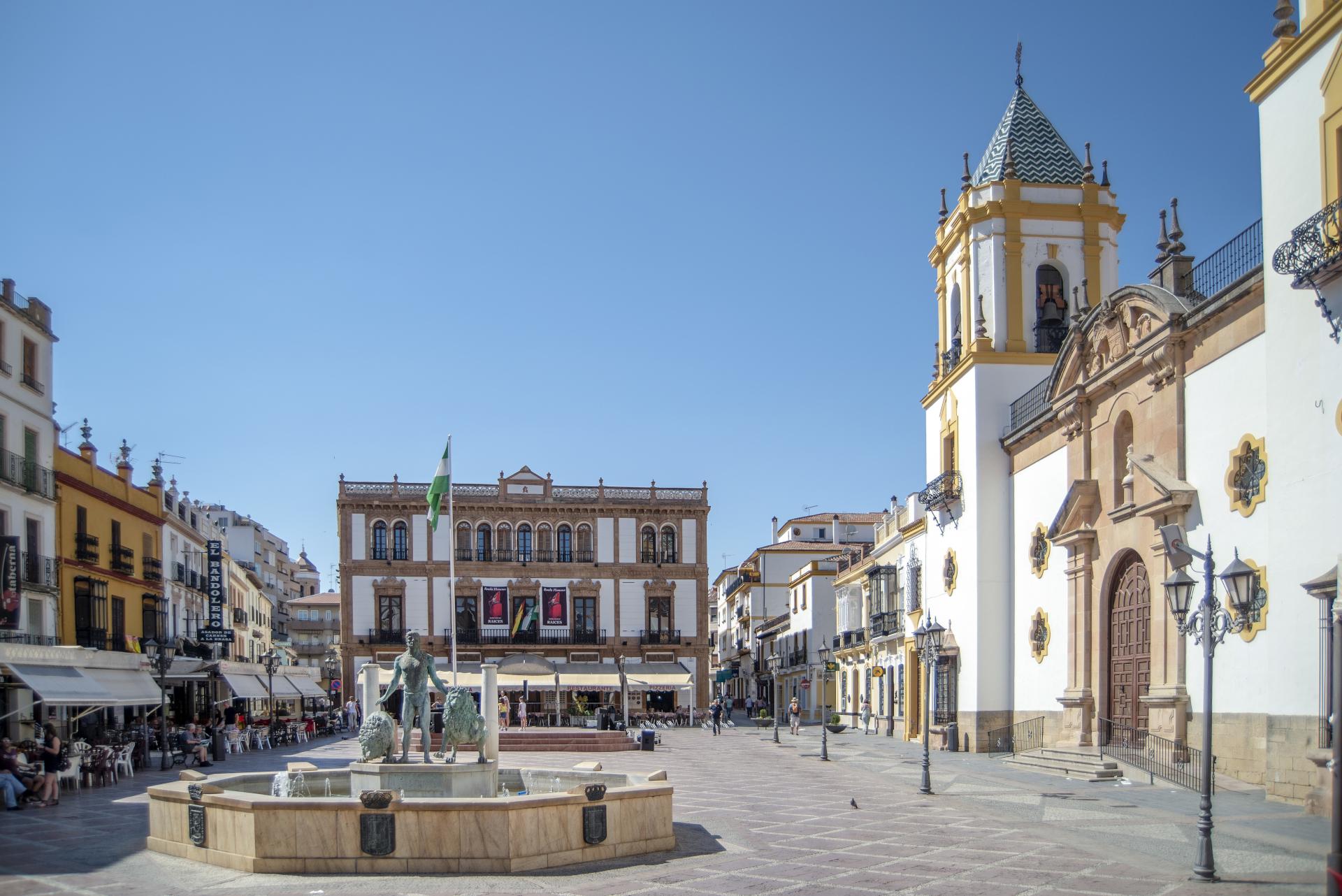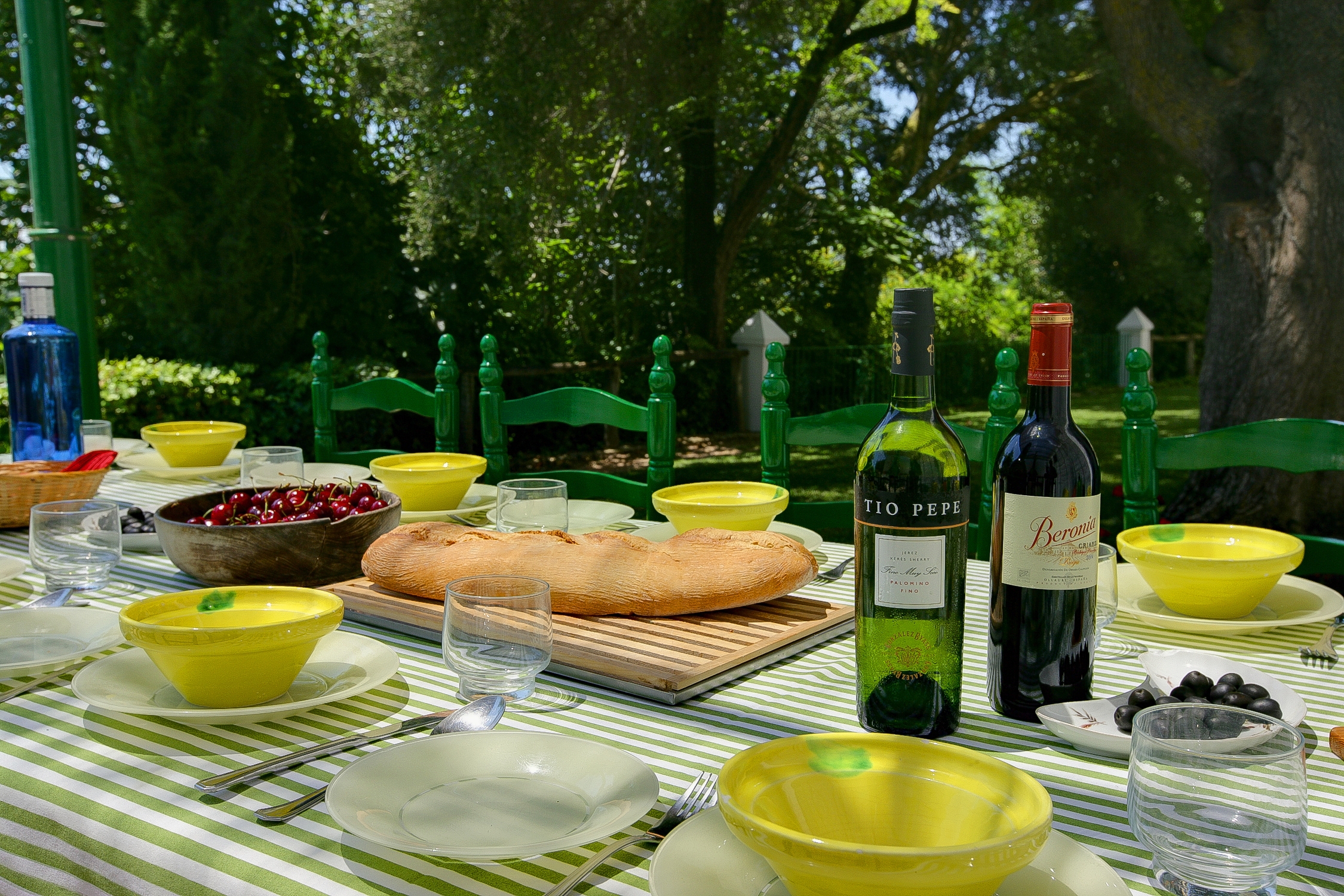Andalucia will enchant you....
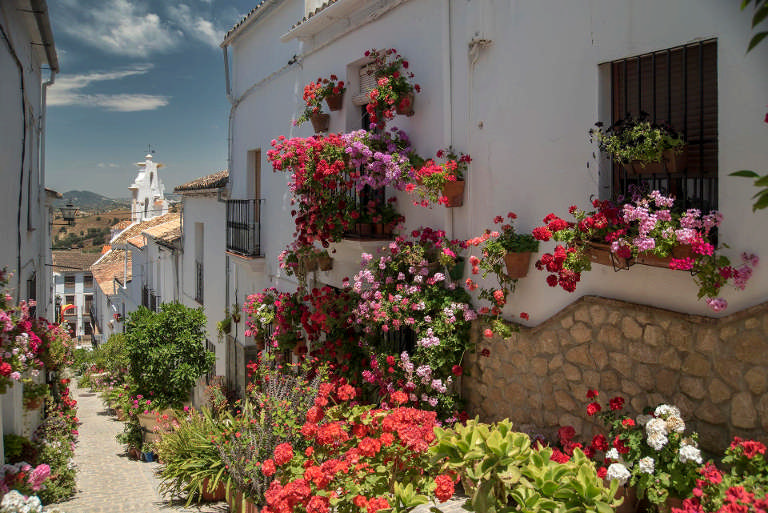
Here you will find beautiful countryside, stunning beaches, majestic mountains, lush river valleys, tiny ‘pueblos blancos’ (white villages), elegant cities, beautiful historic towns and a variety of birdlife, flora and fauna which will surprise and delight even the most experienced traveller. Whether you are planning to walk, cycle, explore, watch birds, take photographs, paint, enjoy the local gastronomy, lie on a beach or just chill out on a sunbed and read a book beside your very own private pool, we are sure you will enjoy Andalucia and will plan to return.
Did you know?...
In the 10th century Cordoba was a magnificent city with the first street lighting in Europe, paved streets and pavements, 700 mosques, 60,000 palaces, 70 libraries and 900 public baths.
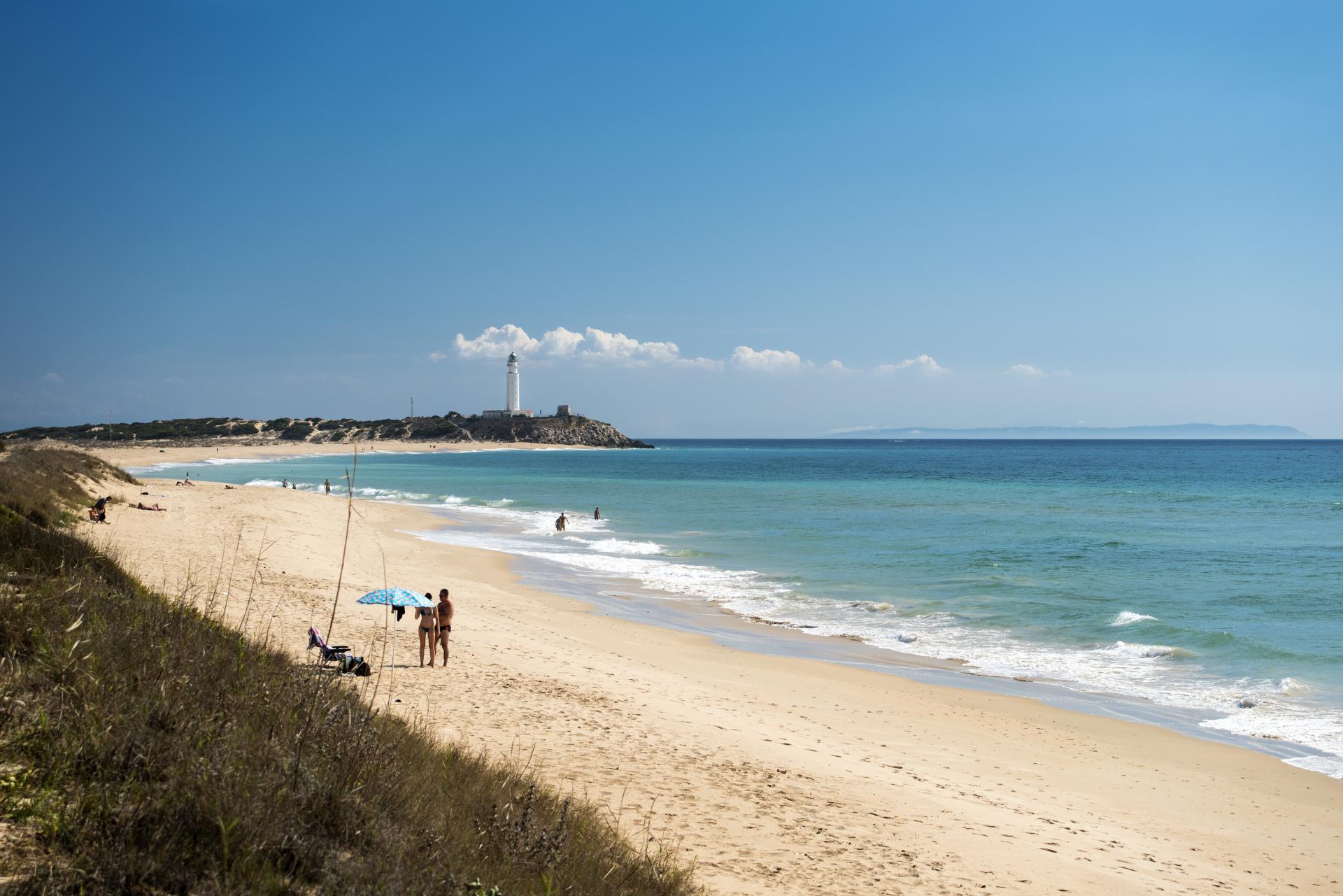
The Cities of Andalucia
Seville
Seville (Sevilla to the Spanish) is the capital of Andalucia. Although this is a large city, the main places of interest are close together in the historic city centre and can easily be explored on a day trip. The Torre del Oro (Tower of Gold) dates back to the 13th century and gets its name from the golden-coloured tiles which used to adorn its exterior. It once had a sister tower on the opposite side of the Guadalquivir River which runs through the city. The tower marks the start of the old city walls and everything to see in a day is within walking distance of here. A little further along the riverbank is the enormous bullring, which you can visit when no bullfights are being held.
Among the highlights of Seville are the Cathedral and the Giralda Tower. The Cathedral is believed to be one of the largest in the world. It certainly is enormous and contains numerous treasures including the tomb of Christopher Columbus, whose remains were brought here from Cuba in 1899. Actually, nobody is sure if it is Columbus in the tomb because he died a pauper and not a hero, but the monument is impressive with its representation of the Four Kingdoms of Spain (as there was in 1492) to guard him. As is so often the case in Spain, the cathedral was built on top of a former mosque and the courtyard of orange trees with a fountain in the centre retains this Moorish flavour- this would originally have been used by the faithful to wash before entering the mosque.
You only have to gaze up at the 94 metre-high Giralda to see that this used t be the minaret of a mosque. It is now the cathedral’s bell tower, but is unusual because the interior consists of ramps instead of steps, so that guards could climb it on horseback. You will have to rely on Shanks’ pony, but it is worth the climb to see the spectacular views of the city from the top and there are several traditional bars in the vicinity for refreshments to help you recover when you come down again!
Across the road from the cathedral is the stunningly beautiful Alcazar fortress and palace, which is another treasure from Andalucia’s Moorish past. This isn’t a place to rush round: you should allow at least two hours, but it really takes about four hours to explore it thoroughly, gardens included, and once inside you are bound to want to see everything, especially if you have not seen any of these Moorish jewels of Spain before.
Jerez de la Frontera
Jerez is a beautiful, elegant city with a host of things to do and see, but is perhaps best associated with its wineries, the famous ‘bodegas’ which produce the different types of sherry, wine and brandy.
It was the Moors who brought wine production to this area and Jerez’s position near a river mouth gave it a commercial outlet via the sea to the rest of Europe. There has been a lasting commercial relationship with England and Scotland, and many of the bodegas have names which will sound very familiar: Williams & Humbert, Sandemans, Osborne, Harveys, to mention just a few. In fact, a drive around Jerez is like a trip round the sherry counter of your local superstore, with so many recognisable names including Domecq, Gonzalez Byass- Tio Pepe, Crofts, Tio Mateo… they are all here and a trip round a bodega to discover how the wines are made (and, of course, to sample a few!) is a great way to while away a couple of hours.
Jerez isn’t just about bodegas, though. Horses are also a shared passion between the UK and Spain, particularly among Royalty and the landed gentry, and it is no coincidence that after Hurlingham, the next oldest Polo club in the world is in Jerez.
Such is the love affair between the ‘Jerezanos’ and their horses, that the city celebrates its famous ‘Horse Fair’ in May each year. It has pretty girls in flouncy dresses, parades of horses and carriages, flamenco music, dancing and, of course, plenty of sherry- this is a party nobody wants to miss!
Jerez is also a must-visit for lovers of culture, with its myriad of museums and flamenco bars. Some say the city is the home of flamenco, so don’t be surprised if you see someone giving an impromptu flamenco performance or bursting into song as they walk down the street.
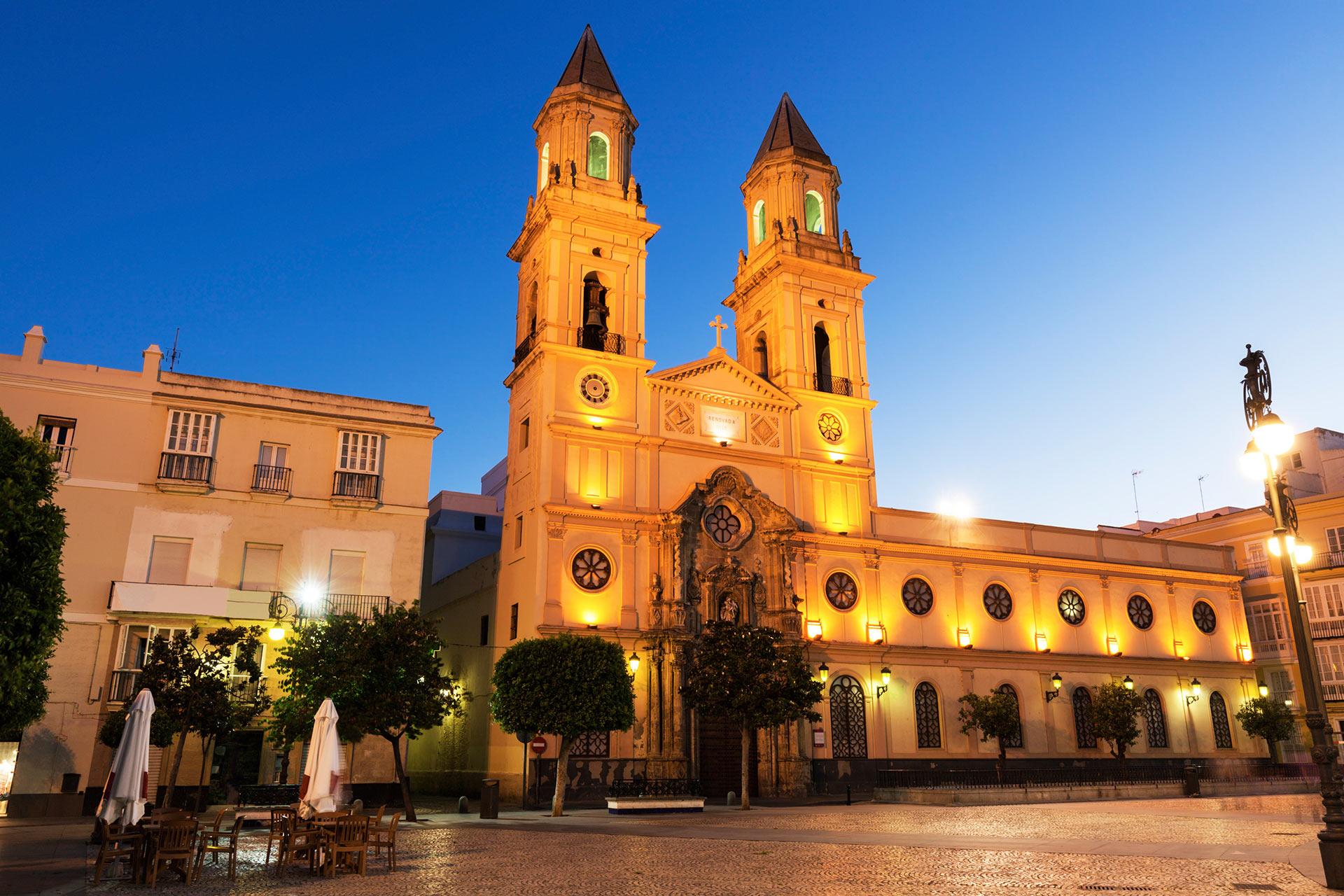
Cadiz
Cadiz is probably the oldest city in Europe outside Greece, having been founded by the Phoenicians three thousand years ago, but it has Roman, Moorish and Renaissance features in abundance. The city sits on an isthmus and is surrounded by the sea on three sides; it also has fabulous beaches so you can combine visits to places of interest, a bit of shopping and time on the beach all on the same day!
The historic centre of Cadiz is fortified and fascinating. Cadiz is a city to wander around, admire its buildings, take lunch, sit in its shady squares and absorb the atmosphere and history.
Malaga
Malaga tends to be forgotten or ignored by travel writers who are more enthusiastic about visiting her better-known sister cities, but this city also has a wealth of interesting things to see.
Crowned by its Gibralfaro castle and 11th century Alcazaba fortress, both of which are worth a visit, Malaga is a Mediterranean port city with a buzzing atmosphere and some lovely old buildings. The main places of interest are all close together.
It is worth taking a look at the Cathedral, which is nicknamed locally as ‘La Manquita’, which means little one-armed lady, because one of its towers was never finished. The streets around the cathedral are incredibly narrow and atmospheric, with some very interesting shops and pretty squares. The Roman Amphitheatre which lies below the Alcazaba is also well worth seeing.
Malaga is known for its museums and art galleries, especially the Picasso Museum. The Picasso Museum is especially relevant to the city because the artist was born here, in a house in the Plaza de la Merced; this is also open to the public and contains some interesting insights into the life of Malaga’s favourite son.
Did you know?...
Andalucia is a golfers’ paradise, boasting around 120 golf courses, including the world-famous Ryder Cup venue Valderrama, and the number is growing. About 40 of the courses are on the Costa del Sol in Malaga Province, which has been officially nicknamed the Costa del Golf.
Granada
Granada’s most famous monument, the Alhambra, is one of the most fascinating in the world and is one of Spain’s most popular attractions. It is such a valuable part of Andalucia’s heritage that the number of visitors has to be controlled.
The Alhambra was declared a World Heritage Site by UNESCO in 1984. Its name comes from the Arabic word ‘al-hamra’, meaning red castle and referring to the red clay from which the buildings were constructed. It began life as a fortress as early as the 9th century, but it was the Muslim Nasrids in the 13th and 14th centuries who turned it into the fortress and palace that we see today. Over the reign of the dynasty the Alhambra fortress was transformed into a small city complete with an irrigation system which enabled the lush gardens outside the fortress to thrive. When Ferdinand and Isabella conquered the Moors in 1492 the Alhambra became a Christian court. (Ferdinand and Isabella were the parents of Catherine of Aragon, who became the first wife of Henry VIII). Charles I, a grandson of the Catholic monarchs, destroyed a wing of the original palace to build his own palace in the then fashionable Renaissance style. In the 18th century the Alhambra fell into neglect and at one time was used as a barracks by Napoleon’s army, who blew up two of the towers during a retreat.
It was only in 1870, as a result of the great interest shown by the Romantic writers such as Washington Irving (who wrote ‘Tales of the Alhambra) that the Alhambra was declared a National Monument and has since been protected and restored.
The main attraction is undoubtedly the Nasrid palace (also called the Casa Real or Royal House) with its intricately decorated rooms and beautiful courtyards. It contrasts vividly with the plain, unadorned walls of the fortress, where there is a steep climb up steps to the watchtower which has excellent views over Granada and the surrounding area.
The palace of Carlos V has never actually been completed. It is a square building but with a central circular courtyard with two floors. It houses two museums- the Alhambra museum which concentrates on the Muslim period and the Museo de Bellas Artes with a collection of paintings and sculptures.
Despite the undeniable appeal of the Nasrid palaces, the gardens are equally magnificent with walkways, terraces, patios, fountains, hedges and all types of trees and flowers of every imaginable colour. Water has been used as a feature in every area, reflecting the Moors’ appreciation of the water which was available from the Sierra Nevada in contrast to the dryness of their native North Africa.
The Alhambra may be Granada’s most famous monument, but the city has a fascinating Jewish, Moorish and Christian past and has much more to offer. It would be a pity not to take time to discover some of the lesser known treasures.
The Costa de la Luz
The Costa de la Luz is one of Spain’s best-kept secrets. The name means Coast of Light and refers to the unique quality and clarity of the light in this area.
This part of the Atlantic coast consists of almost 200 kilometres of white and golden sands, stretching from Tarifa all the way up the north-west coast to the border with Portugal.
The Costa de la Luz has generally escaped the massive construction and mass tourism of the Costa del Sol, and its attractions are not just limited to its fabulous beaches. The inland part of Cadiz Province also offers a huge amount in the way of natural beauty, history, culture and tradition, with tiny villages where time seems to have stood still, and stunning countryside.
Did you know?...
Tarifa is one of Europe’s windsurfing and kitesurfing capitals. Even if you don’t want to join in, it’s great fun to lie on the beach and watch.
Some beaches to choose from…
The beaches on the Costa de la Luz are amongst the finest in Europe and many have been awarded Blue Flag status.
The ‘calas’ between Roche and Conil are picturesque, sandy and sheltered coves. Roche beach is also a popular choice with beach bars and a well-known restaurant.
La Fontanilla, at Conil: Wide, open, sandy beach backed by a promenade, two extremely popular fish restaurants and various chiringuito beach bars.
Cape Trafalgar: Cape Trafalgar Lighthouse stands on a low rocky outcrop jutting out into the sea. There has been a light of some description on this point for several centuries because, lying off shore in an 8km long crescent, glistening with white water as the waves break over them, is a dangerous necklace of rocks that have claimed many ships over the centuries. Most famous of these are some of the ships that survived the battle of Trafalgar but which foundered here during the storm that pounded the Spanish, French and English fleets alike just after the battle.
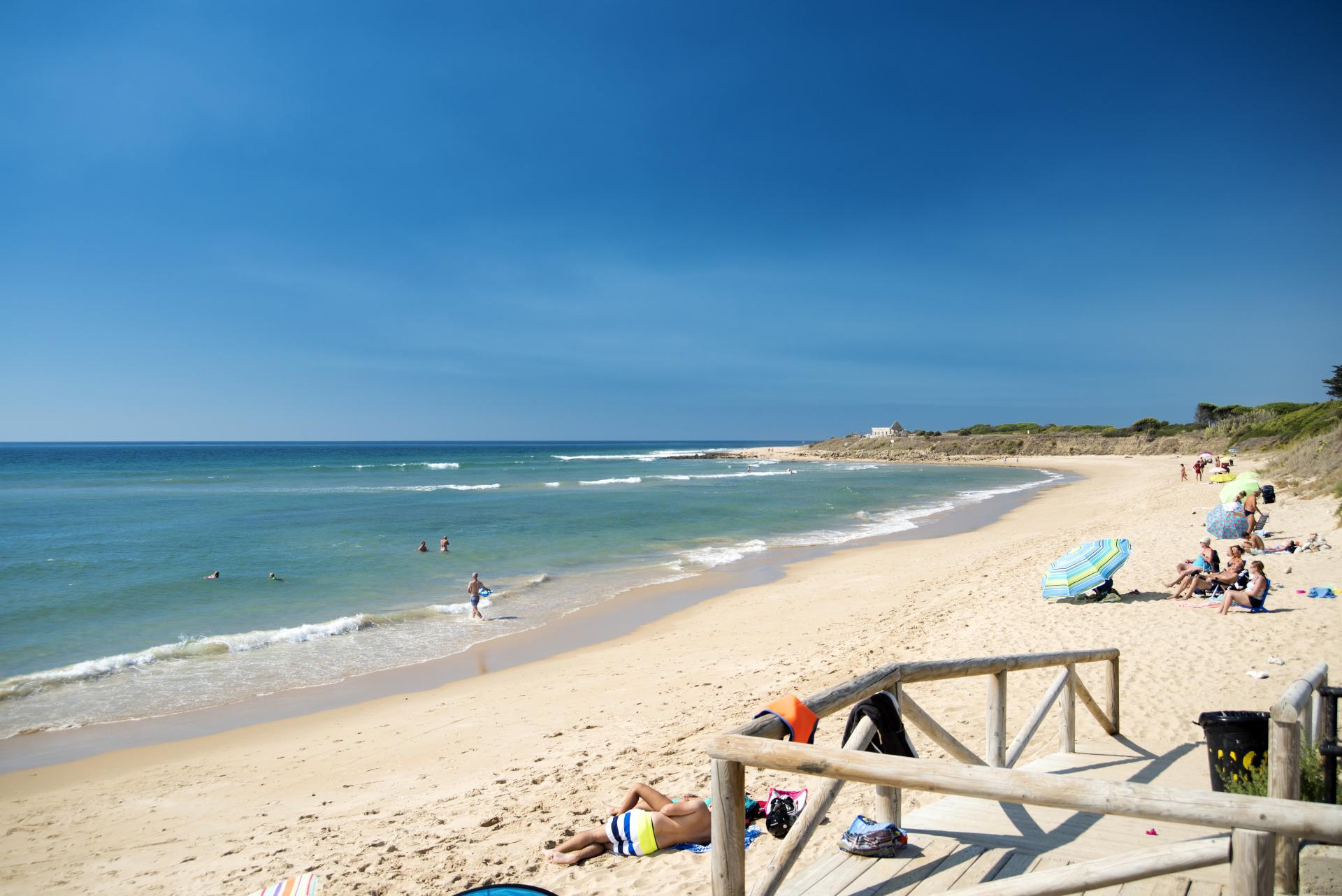
Zahora: Safe, sheltered beach with rock pools and lagoon at low tide- great for snorkelling and families with younger children. There are fantastic views of Cape Trafalgar and the lighthouse. There are several lively beach bars serving paella, fresh and fried fish and other local delicacies as well as thirst quenching tinto de Verano (red wine and lemonade). A great spot to watch the sunset and enjoy a cocktail, often accompanied by live music.
El Palmar (Vejer Costa): Wide, open golden sandy beaches with good swimming, surfing and lots of bars and restaurants to choose from. Plenty of places to hire surf equipment or organise lessons.
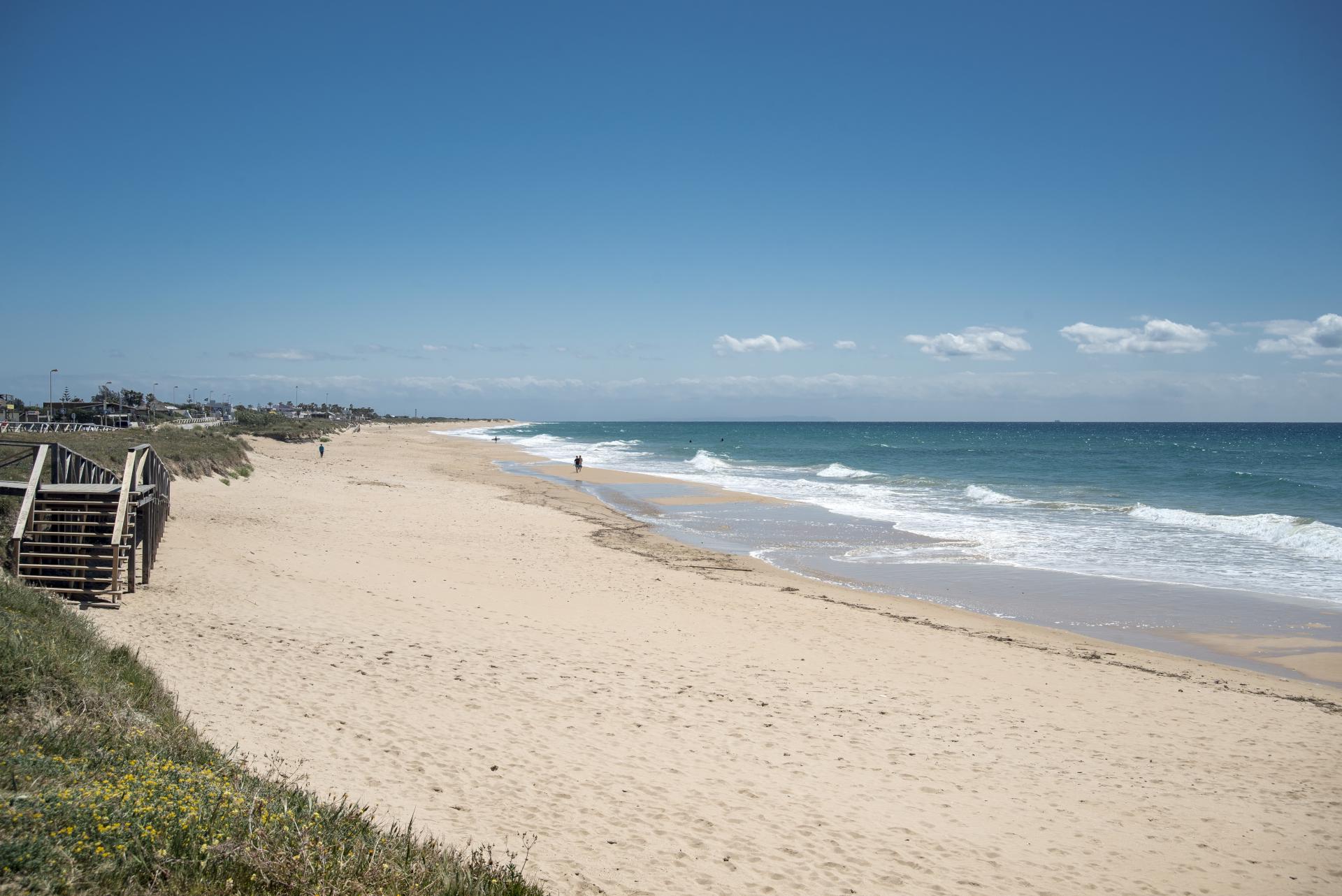
Bolonia (on the way to Tarifa): A beach with cultural interest. Soft sand, curved bay, pretty location with a few restaurants and the extensive Roman remains of Baelo Claudia to explore!
Towns and Villages
Conil de la Frontera
Conil is a bustling holiday town in summer, small and lively with an excellent long and wide sandy beach. In the old town it has some fine historic buildings such as the Santa Catalina Church, the Church of La Misericordia which dates from the 12th century and the Guzman Tower. The tower is a reminder of the town’s violent past when it was defended by Guzman against the Moorish invaders in the 12th century.
The town’s name- de la Frontera- shows it did once have an important role to play as the frontier town between the Christians and the Moors. Excluding tourism, fishing is the main business here and there is plenty of evidence of that in the fish restaurants in the area.
Vejer de la Frontera, El Palmar and Cape Trafalgar
Vejer is unique. It is a picture-perfect white hilltop village that lies only a few kilometres from the sea. And what a stretch of sea! Stunning beaches of El Palmar, Zahora and Los Canos de Meca, all within sight of the lighthouse of Cape Trafalgar. Yes, this is where the battle was fought in 1805!
Vejer has Roman, Visigoth and Moorish roots and needs to be explored on foot. Many of Vejer’s monuments are in remarkable condition despite dating back to the 10th-12th centuries. There are arches, gateways and towers as well as the castle, which lies within the old city walls- its main entrance leads into the main patio and the arms patio, from whose battlements there are some amazing views. The town has some lovely churches, 17th and 18th century houses and pretty squares, but it is worth sparing a few minutes of your sightseeing time to check out the 19th century windmills which are characteristic of Vejer.
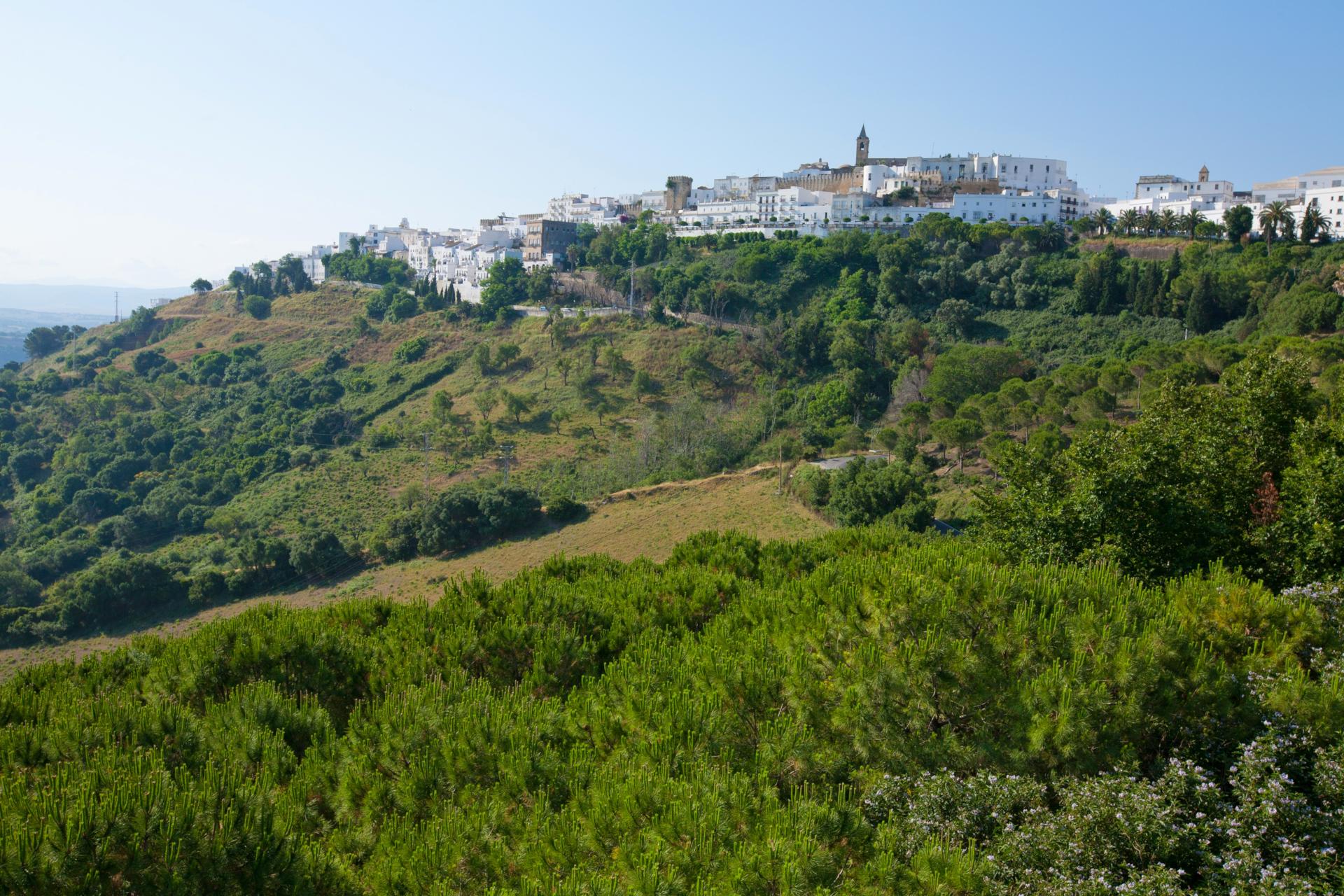
Bolonia
You would drive past Bolonia if you blinked, but if you did you would miss one of the largest ancient Roman towns ever discovered on the Iberian Peninsula.
Bolonia itself is a tiny fishing village with just a few hostels, and bars and restaurants but Roman Bolonia, or Baelo Claudia, was an important full-sized town with temples, Necropolis and industry, located in a very atmospheric setting in the curve of the coast which has hardly changed for 2,000 years. They used to make a fish sauce called ‘garum’ here which was considered a luxury and exported to Rome.
Other places of interest
Medina Sidonia
Medina Sidonia, as its name suggests, is an old medina perched high on a hilltop. You cannot escape the Moorish heritage of the area and nowhere else does the Christian present dominate the Moorish past as much as it does here. This was the stronghold of Guzman ‘El Bueno’ or Guzman ‘The Good’ who was awarded the title of First Duke of Medina Sidonia for his role in repelling Moorish invaders in the 12th century. The Dukes of Medina Sidonia are still amongst the most powerful families in Spain. It was said in the 16th century that you could ride all the way from France to Medina Sidonia and never step off the lands of the Dukes. Its illustrious past has left it with some remarkable buildings and a unique atmosphere but now it is just a friendly market town with breathtaking views and a beautiful town square lined with shops that sell their famous cakes.
Ronda and Arcos de la Frontera
Ronda
Ronda is situated about 750 metres above sea level in mountainous terrain which was notorious for hiding bandits, even as late at the 1950s. It is a lovely historic town with a wealth of monuments and attractions. The River Guadalevin that flows through the town centre has divided Ronda into two and created the spectacular Tajo Gorge, for which the town is famous. The gorge is crossed by a bridge, the ‘Puente Nuevo’, meaning New Bridge. It was actually completed in 1740 but it so-named because it replaces a previous one which collapsed. It spans a drop of about 300 feet. The main section of the bridge used to be a jail and is now a museum, with artefacts, prints and maps charting its history.
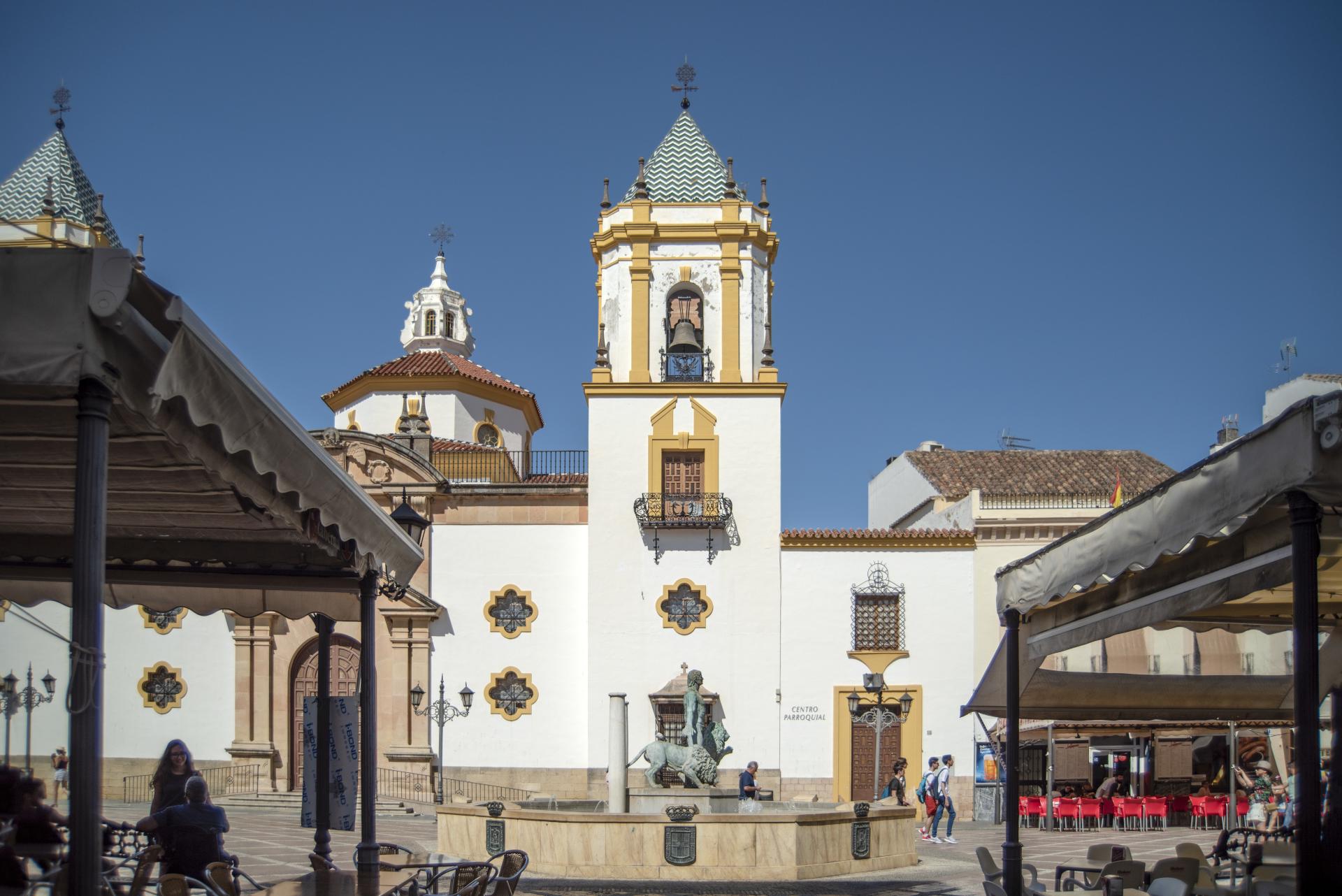
The more modern side of the gorge is home to the lively ‘Mercadillo’ area of town. You will also find the Plaza de Toros, one of the oldest bullrings in Spain. Opened in 1785, it was here that bullfighting on foot rather than on horseback was first introduced to the world by the famous Pedro Romero. During the annual town ‘fiestas’ a bullfight is held with the ‘toreros’ dressed in the style of the Goya era, cheered on by the ‘damas’ (ladies) also dressed in the attire of the time.
Did you know?...
Ronda bullring is one of the oldest in Spain. It took six years to build and was designed in a galleried style which is reminiscent of the circular courtyard of the Carlos V Palace in the Alhambra, Granada.
Between Ronda and Arcos
The small town of Grazalema is well worth a visit as it has some lovely historical buildings, good restaurants, unusual little shops which are great for souvenirs, and its location is outstanding. The views are spectacular and in summer it is often a little cooler here than in other parts of the region. Grazalema is well known for its textile industry, particularly blankets and ponchos.
Zahara de la Sierra
The small hilltop village of Zahara de la Sierra has a old castle and lovely views over the lake. In June each year, Zahara and the village of El Gastor, which is the other side of the lake, change their appearance completely as the local people cover the streets and walls of buildings with greenery to celebrate Corpus Christi. The villages have become quite famous for this.
Arcos de la Frontera
Arcos is so ancient that according to legend it was founded by a grandson of Noah. It perches on a rock with dizzying views, and if you only see on of Andalucia’s ‘pueblos blancos’, this should be it. It was an original frontier town from the old Muslim kingdom of Granada and has a great many ancient and fascinating buildings as well as some very impressive mansions. Although the Moors were expelled from here relatively early, in 1264, Arcos retains a great many Moorish treasures and is a delightful town to explore.
Did you know?...
In winter, the climate of the Costa Tropical means you can often sunbathe on the beach in the morning and ski on the snowy slopes of the Sierra Nevada in the afternoon.
The Alpujarras region of Granada
Orgiva
Capital of the Alpujarras, Orgiva is a bustling town with a population of more than 5000. Left to decline from the early 17th century after the final expulsion of the Moors, Orgiva fell into an economic decline, as indeed did many of the other towns in the area. In recent times, however, the town has grown into a thriving centre serving a wide catchment area.
Orgiva is centrally located- to the south lie the coastal resorts of the Costa Tropical, to the north are the Sierra Nevada mountains and the pretty villages which wind their way up towards them. These include the tourist villages of Pampaneira and the highest village in the whole of Spain, Trevelez.
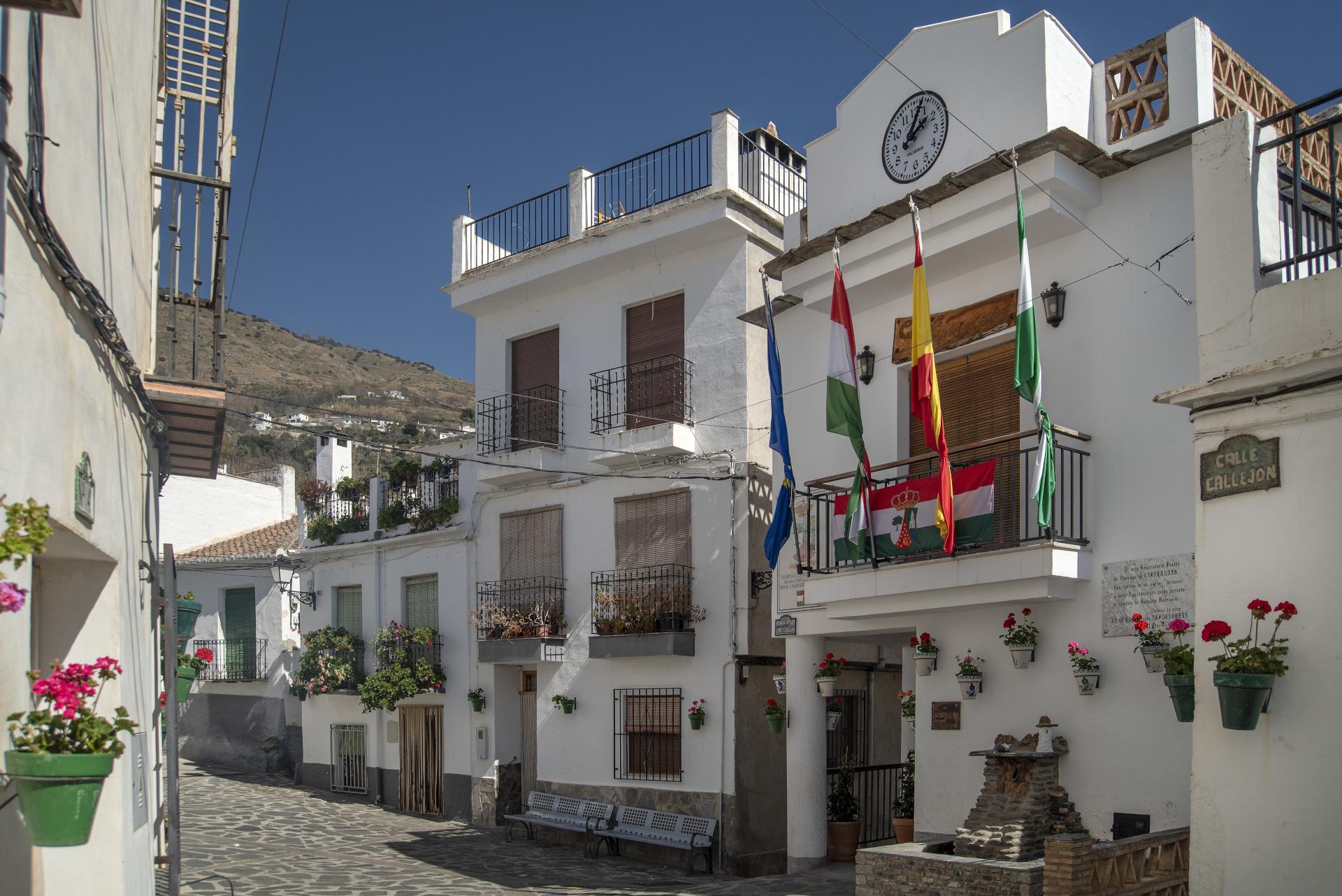
Lanjaron
The town is most famous for the excellent mineral water it produces. Lanjaron water was the first to be bottled in Spain and is found on tables throughout the peninsular. In fact, June 23 is the night of the great Lanjaron water fight or more correctly, the Ham and Water Festival, the greatest water fight in Spain, or possibly the world! Starting at midnight participants grab any kind of container they can find and spray everyone around, including complete strangers, leaving everyone soaked to the skin. Once the fight is over, fireworks are set off and the ham feast begins.
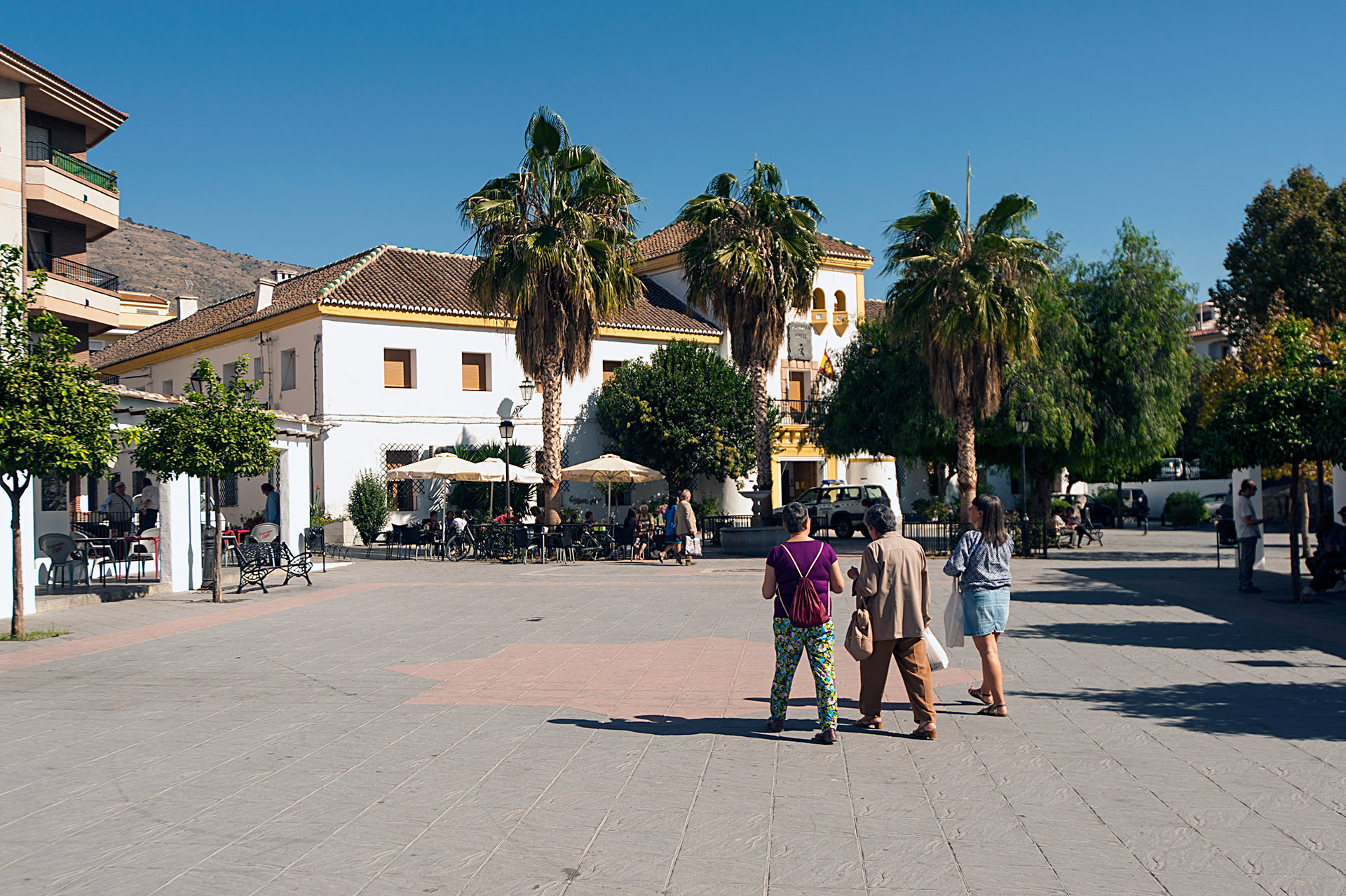
Food in Andalucia
Andalucia offers a wealth of gastronomic delights. Menus are imaginative and feature a diverse range of dishes. A marvellous choice of seafood is always on offer in and around the coastal towns. Inland, flavourful game dishes appear on the menus alongside the Spanish favourites of pork, lamb, beef and goat- and of course the famous ‘rabo de toro’ (bull’s tail, or oxtail).
In rural area you will come across ‘ventas’. These were the traditional roadside eating houses once frequented by farmers on horseback and are now very popular with families. They serve ample portions of home-cooked local produce.
Did you know?...
While paella is widely deemed to be Spain’s national dish, in Andalucia some purists insist that to be a true paella it has to be cooked outdoors- if it is cooked indoors, it is called ‘un arroz’ (a rice dish).
Every area of Andalucia has its specialities. On the Costa de la Luz, of course, it is freshly caught fish and shellfish. ‘Urta a la Rontena’, for example, is sea bream in a type of ratatouille sauce, or it is often to be found with a cognac sauce. Another local speciality is the ‘tortillas de camaron’, which are small shrimp fritters. On the Mediterranean coast, ‘Fritura Malaguena’, a mixture of fried fish, is famous, and if you see sardines being cooked on wooden spits outside a ‘chiringuito’ beach restaurant, then don’t miss the opportunity to try them. Many dishes served by restaurants on the coast of Granada Province include tropical fruits, which is not surprising as this region specialises in growing them. Inland in Andalucia, menus will always offer a tempting array of hearty meat dishes.
Did you know?...
Trevelez is the highest village in Spain and is renowned for the sweetness and quality of its ham, which is cured in cold, dry conditions at a high altitude and with the breeze which blows from the Sierra Nevada.



